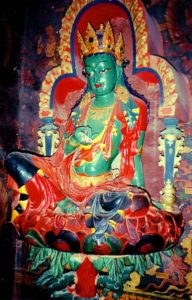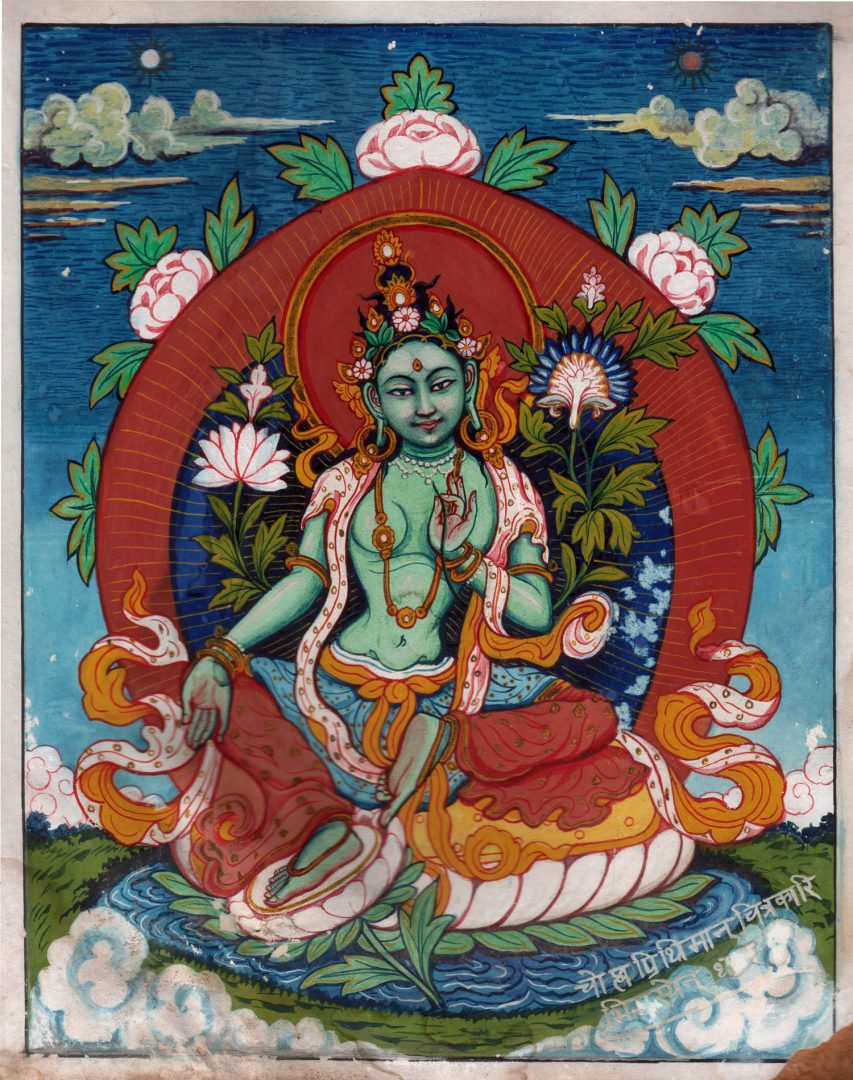Understanding Tara can be a Challenging Quest
In some schools of Buddhism she is known as a female Bodhisattva, or an enlightened being of compassion and action. Other schools refer to her as one who represents success in endeavors. Sometimes the Tara is looked like more of a symbol deity who comes in many forms, or qualities. She also can be referred to as the “Great Noble Tara” and sometimes even “The Mother of Liberation”. Because of these varieties of Tara pinpointing an answer to the question, “Who is Tara?”, often starts with an inspection of her history.
When we talk about Buddhism and the Tara we must first understand that this belief system took root in India. It is believed that the Tara was adopted from the Tara Devi, or Goddess, of Hinduism and was then adopted into Buddhism. Whether this was a planned adaption or merely caused by cultural drift, is unclear.
 There are many Buddhist based myths and beliefs surrounding Tara. There is a myth telling us that she was born from tears of compassion. Sometimes these tears are shed by her and other times they are the tears of Avalokitesvara or Chenrezig. Then there are stories of her being a princess who was following the path of Buddhahood. When doing so, she was urged to be reborn as a male. In this way, she was told, she could progress farther down the path to Enlightenment. She then reminded her urgers that gender had no influence on enlightenment and vowed to be reborn as a woman until life and death no longer existed. Some teachings tell us that there are innumerable manifestations of Taras. Conversely in other schools, there are 21 manifestations of Tara. In addition to these varied myths and beliefs, there are also numerous prayers, vows, and mantras involving the Tara or the blessings of Tara.
There are many Buddhist based myths and beliefs surrounding Tara. There is a myth telling us that she was born from tears of compassion. Sometimes these tears are shed by her and other times they are the tears of Avalokitesvara or Chenrezig. Then there are stories of her being a princess who was following the path of Buddhahood. When doing so, she was urged to be reborn as a male. In this way, she was told, she could progress farther down the path to Enlightenment. She then reminded her urgers that gender had no influence on enlightenment and vowed to be reborn as a woman until life and death no longer existed. Some teachings tell us that there are innumerable manifestations of Taras. Conversely in other schools, there are 21 manifestations of Tara. In addition to these varied myths and beliefs, there are also numerous prayers, vows, and mantras involving the Tara or the blessings of Tara.
Here is a listing of well known Tara manifestations:
White Tara – a compassionate Tara who brings protection, long life, and healing
Green Tara – known as the original form of Tara and one who is known for her Bodichitta
Blue Tara – known as a powerful fierce Tara who protects with a Mothering rage
Red Tara – known as a powerful fierce Tara who is known as the heart of Tara and brings good into the heart
Black Tara – known as wrathful Tara who is a symbol of power
Yellow Tara – known as the Tara of prosperity and bounty of waters
Why should we find significance in the Tara if there seems to be no clear path to understanding her embodiment? I answer this question with another question. Why should we find significance in the Buddha if there seems to be no clear path to understanding his embodiment? In this way, we can look towards the Tara or any other being who possesses a certain Buddahood and understand that this examination offers us refuge, teaching, compassion, blessings, love, healing and any other assortment of gifts that we can use as tools to find our way to attain Buddhahood.





